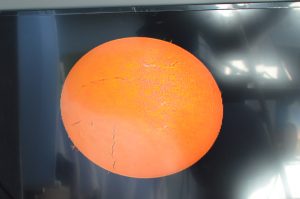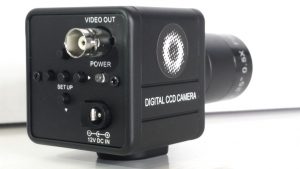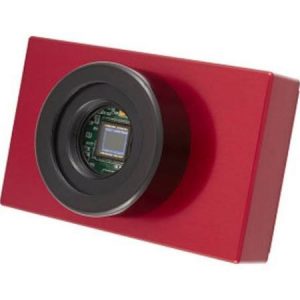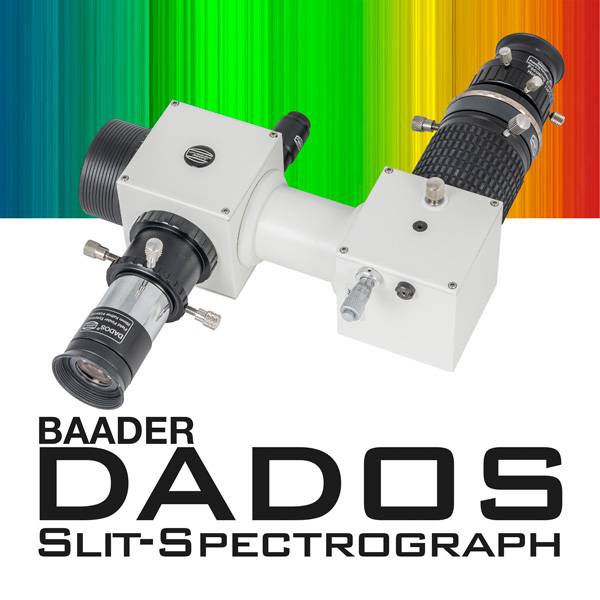Astro-video cameras are unique in that they allow users to capture image data through their telescopes and then observe the resulting images – in real time – on a TV monitor or computer screen.
Video cameras that are optimized for astronomy install into the telescope just like a normal eyepiece. The camera uses a CCD or CMOS sensor combined with sophisticated video-processing circuitry, to yield elevated levels of sensitivity, including wavelengths not visible to the human eye.
The results are views that rival looking through the eyepieces of far-more-massive telescopes.

Another benefit with astro-video cameras is most apparent in urban areas where the high levels of ambient light have a negative effect on visual observing conditions (of course this is not a problem for the solar eclipse). Adding an inexpensive light-pollution filter in front of the astro-video camera can allow users to see far more from their light-polluted urban skies than visually through an eyepiece.
And astro-video technology fits well in the social-sharing world of today, as astro videos can be streamed over the Internet to allow anyone located anywhere in the world to experience telescope views in real time.
They also work well for in-person sharing, as the TV or computer monitor can be easily seen by multiple people simultaneously – making it perfect for outreach programs held by astronomy clubs, planetariums, museums, schools or with family and friends.
Of course, these cameras also excel at viewing a solar eclipse. Not only are they well suited for solar imaging and real-time viewing when attached to a properly filtered telescope, they also allow users to record the entirety of the eclipse as the Moon slowly engulfs the Sun.

If you need help choosing a telescope, you are in luck. Over the last few decades there has been an explosion of innovative products from the amateur telescope industry, which means you can get a great telescope combination at a great price!
One of the unique aspects of today’s telescopes is their ability to be connected to your smart device. Using a planetarium/ telescope control app, you can pick what you want to see, press a button on your smart phone or tablet and your telescope does all the work – pointing the eyepiece exactly where it needs to be for you to grab glorious views of planets, stars and galaxies.
Put all this together and on the big day, you will be able to share your eclipse video images live and also record a video that you can keep forever.

We suggest you check out the Night Skies Network which allow offers a website for broadcasting astronomy (and solar) videos worldwide. It’s a great resource for you to learn the potential for streaming your solar videos.
Astronomy enthusiasts around the globe use the Night Skies Network to broadcast nighttime (and daytime) skies as seen through astro-video cameras attached to their telescopes. The free service has more than 13,000 members and 300 different broadcast channels. Everyone from seasoned astro-imagers to elementary school classes participate in streaming astro videos. It’s an excellent way to see what you can accomplish with your own astro-video camera. The site is available here.
Also, check out the MallinCam website. They are the worldwide leaders in astro video technology and have complete systems for as low as $229 (check out our article on these systems here). MallinCam products are available exclusively in the US by Jack’s Astro Accessories here.
Another option is offered by Atik Cameras, a manufacturer of high end CCD cameras for astronomy and other science applications such as fluorescence inspection of jet turbine blades. The company’s Atik Infinity is the first Atik camera dedicated specifically to video astronomy.
You can learn more about the camera here and it is widely available in the US from a number of astronomy retailers.
###
The Astronomy Technology Today editorial staff would like to take this opportunity to remind you of the availability of our Solar eclipse equipment guide – The Definitive Equipment Guide to the 2017 Solar Eclipse. Our goal with the 40-page publication is to provide an easy-to-consume introduction to the technological options for viewing and imaging the Great Solar Eclipse.
We cover the gamut of options available including building your own solar viewer, solar glasses, smart phones, DSLR cameras, using astronomy telescopes, solar telescopes, using binoculars, solar filters (including a DYI filter option), CCD astro cameras, astro video cameras, webcams and much more. You can view the guide on our website here – its free and there is no requirement to sign up to read the guide



